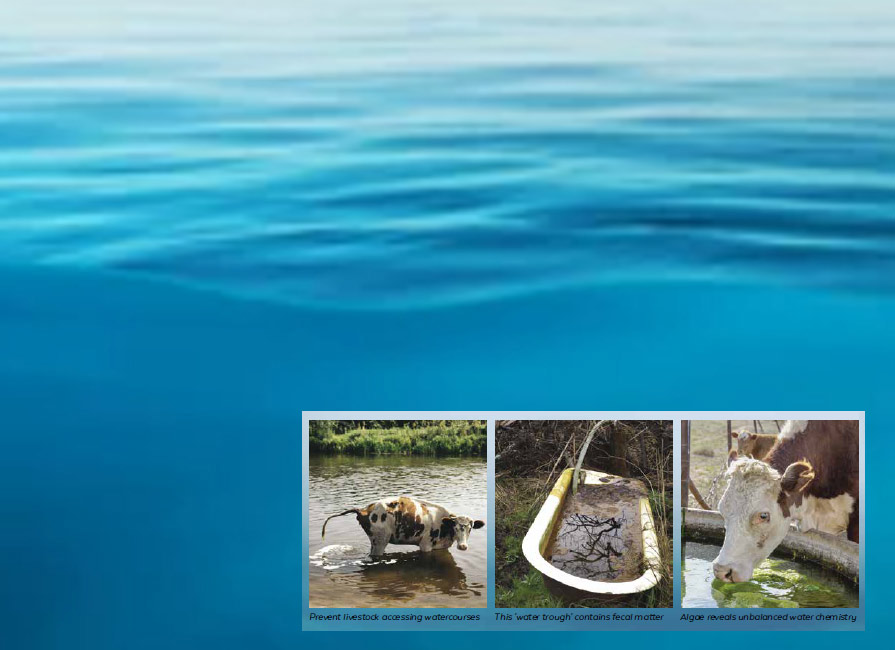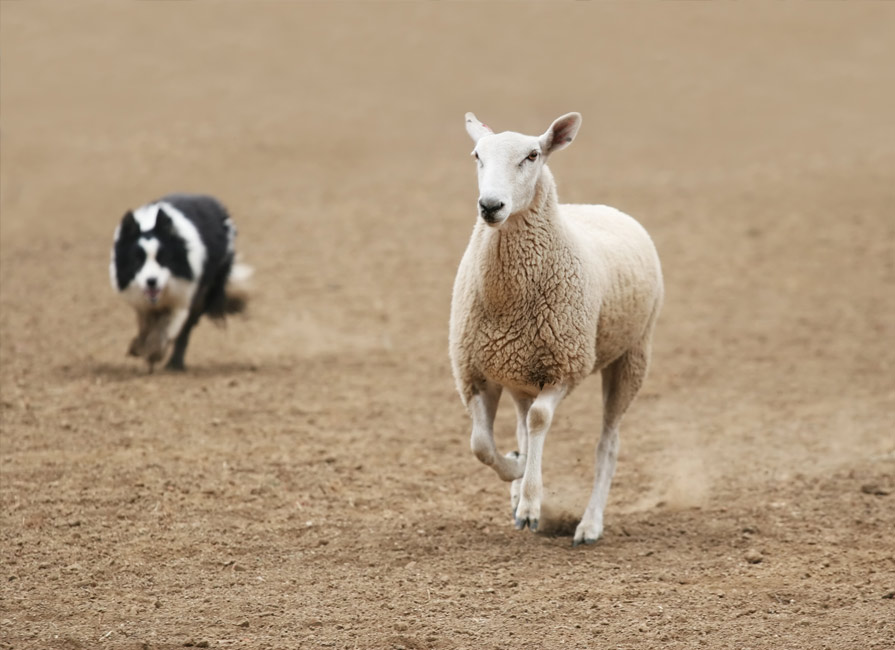Water is arguably the most important nutrient on earth. It is “the universal solvent,” providing…

Staying Safe
An invader is detected and deemed dangerous. Evidence is delivered to multiple locations, where it will first be used to identify the foreign agent’s unique weaknesses; then to design and manufacture special weapons to exploit those weaknesses. The weapons are designed to work within the conditions and constraints of the location being infiltrated, effectively targeting the invader while avoiding collateral damage. As supplies increase and weapons are deployed, the invader is disabled, captured and finally removed. But the story does not end there. A surveillance and rapid-response network is created so that, should this intruder ever come again, they will be rapidly identified and neutralized before any significant damage can be done …
A thrilling spy novel? No—this is your animal’s adaptive immune system at work. From invasion to surveillance, this entire process can take a few weeks, and begins anew every time an unrecognized disease agent enters the body. The ‘surveillance and rapid-response network’ is what we often call ‘immunity’ and it is the ultimate goal of vaccination. Let’s take a closer look at what it does, what it can’t do, and considerations for creating that network through vaccination.
Immune memory
‘Immune memory’ or ‘immunity’* exists when the body has made some effort to investigate a particular enemy and has figured out how to make an effective weapon against it. That custom-made weapon is known as an antibody. The body has taken a fingerprint, of sorts, so it can recognize the disease agent in the future. And it has saved a blueprint for the antibody design. If the same pathogen returns the body will not have to repeat the design process from scratch but can quickly manufacture and deploy antibodies that are specific to the disease agent and designed to work well in whatever tissue the pathogen targets—for example in the lung, the gut or the bloodstream.
Although it is still not clear why, the body seems to carve some of these blueprints onto metaphorical stone tablets, well preserved and readily available decades later. This is the case for measles in humans and for pox viruses such as fowl pox. The blueprints for fighting influenza, Lyme disease and leptospirosis, on the other hand, seem to be scrawled on post-it notes, hastily stuck on the fridge, and soon lost. Immune memory for these diseases fades in a matter of months, so fighting them is a new project every season.
For as long as an immune memory lasts, it ensures that if that disease agent enters the body again, the outcome will not be as bad as it would be without immune memory cells. While this is truly an impressive effect, it is also crucial to recognize what immune memory cannot do: immune memory cannot guarantee complete protection from the infectious agent entering the body, or even from clinical disease.
Immune memory reduces the severity and spread of an infection, but it does not prevent infection. In some cases, that protection is good enough to effectively prevent symptoms and spread of disease. But ‘immune’ individuals can still be re-invaded by the same pathogen and experience clinical illness, although it is usually mild or undetectable. Most importantly, ‘immune’ individuals can sometimes transmit small amounts of infectious disease agent to other individuals. Because of this, ‘herd immunity’ is required to effectively control infectious agents, keep exposure to a minimum and prevent significant outbreaks in your animals.
Factors in vaccine effectiveness
Exposure and immune memory are not the only factors in whether or not your animals get sick.
Nutrition and stress: Low-stress husbandry and good nutrition play vital roles in ensuring the immune system can do its job. Lifestage is also a factor: the immune systems of very young animals are not fully developed; older animals may lose some immune function; and immune activity is suppressed during late pregnancy. Poor nutrition can rob the immune system of the energy and minerals it needs to function fully. And, of course, if the animal is already combating other disease, the system will have less resource available to respond to additional disease challenges or vaccination. If the body’s resources are spread too thin due to stress, poor nutrition, multiple disease challenges or other reasons, the animal may have limited ability to fight disease or they may be unable to create immune memory. What a waste of the time and effort you spent on vaccination!
Genetics: Immune response uses resources. Energy, protein, trace minerals, antioxidants and more are required to manufacture antibodies, neutralize a disease agent, and clean up the mess. Yet when a new disease challenge sweeps through the herd, we are often glad to see some animals holding on to high production for a few extra days—and sometimes shake our heads at those that show the first signs of slowing down. This is backwards. While it is true that we should select the most disease-resistant animals, this needs to be done in the context of the big picture. Which animals are demonstrating immune competence: the ones that ignore an invading pathogen, or the ones that stop what they are doing and turn their attention and resources toward getting rid of it? Some production-oriented genetics focus so much on growth and productivity that they deprive the immune system of the resources it needs to do its job. The cow that slows down early and recovers well is a better breeding choice than the one who maintains exceptional production until the moment she crashes.
Herd immunity: Even with excellent nutrition, exemplary handling, and judicious genetic selection, it is unreasonable to expect every animal to be at the top of its immunological game at all times. You will probably always have some young, some older and some immune-compromised individuals in the herd. Vaccination simply cannot protect these animals directly because they are unable to create proper immune memory. How can you control disease risk for these animals? Your most vulnerable animals are safest when the healthy individuals surrounding them have immune memory. When an infectious disease shows up in the herd, prior vaccination will allow those with robust immune systems to minimize their contribution to spread, which lowers the risk of exposure for those that cannot fight the disease. This is herd immunity.
Vaccines
Vaccines use altered versions of the disease agent to develop immune memory without the undesirable consequences of disease. Modified-live or attenuated vaccines are most similar to natural infection. They tend to inspire a strong immune response but can also carry some of the risks or side effects of disease. Killed or inactivated vaccines carry less risk of vaccine-induced disease but may also invoke a weaker immune response. When needed, immune stimulants called adjuvants may be added to bolster vaccine response.
Subunit, polysaccharide, conjugate and recombinant vaccines attempt to deliver the best of both worlds. Made from pieces of the original disease agent or its associated toxins, these formulations strive to promote effective, long-lasting immune memory with minimal side effects. Pay attention to the indications and warnings given for each vaccine type, as some are not safe for all lifestages. For example, some modified-live vaccines can cause abortion when administered to pregnant animals.
Immune responses are tissue-specific. A bacterial infection in the nasal cavity is met with antibodies that work best in respiratory tissue, while a parasite in the small intestine is attacked by a gut-specific antibody of a different type. Some vaccines are designed to be administered directly into their target tissues—for example, some respiratory vaccines are given as a squirt up the nose. Many vaccines are designed to be injected into the fluid between cells, where the lymphatic system routes them to the proper tissues for processing. Because immune response is tissue-specific, it is important to administer vaccines exactly as directed.
Timing
The initial response to an unrecognized pathogen can take a few weeks and vaccination is effective only after that process is complete. If your animals are going to travel, or if a new animal or other risk will be introduced to your farm, allow at least four weeks for vaccination to take effect.
If animals arrive at your ranch unprotected and are vaccinated upon arrival, it is best to quarantine for four weeks, if feasible.
Vaccination four weeks prior to birthing can help enrich colostrum with antibodies that will protect the newborn from disease. Those antibodies also prevent effective vaccination. Colostral antibodies wane over time, so be sure to follow age recommendations for vaccinating young animals to ensure that they are vaccinated as soon as they are unprotected and able to create immune memory.
Good timing is crucial for effective vaccines, but timing is useless if other factors render your vaccinations ineffective. If your animals are ill, malnourished or highly stressed, your vaccination results may be poor. If you are not sure whether an animal should be vaccinated, consult your veterinarian. After a vaccination program, monitor animals for signs of illness and provide additional health support, as needed.
Tailoring your program
Vaccination may not be beneficial if all of the following apply:
- You maintain a closed herd
- You never move animals off the farm
- You prevent interaction with wildlife
- You have been on your farm for some time and have not had disease problems in the past.
Consider vaccination if you:
- Show, or regularly move animals off the farm
- Bring in seasonal breeders from other farms
- Add feeder or hatchery animals to existing groups
- Have had disease problems in the past
- Are aware of disease problems in your neighborhood.
Summary
Vaccination reduces severity and spread of disease, but doesn’t completely prevent infection. Herd immunity is important for protecting animals whose immune systems are less effective due to age, pregnancy, poor nutrition, genetics or disease.
While vaccination can be a vital tool to manage health and prevent disease, it must be considered within the larger context of risks, costs, animal health and wellbeing. Maximize your investment by providing excellent nutrition and low-stress husbandry, selecting disease-resistant genetics, and by timing and administering vaccines correctly.
Jennifer Gravley DVM is a veterinarian and educator with a special interest in the intersection of food animal medicine and public health



